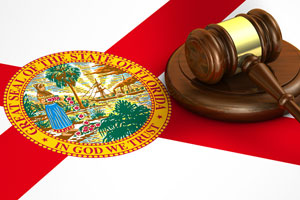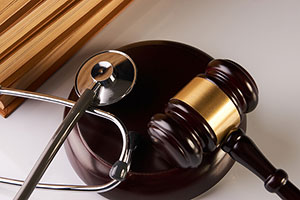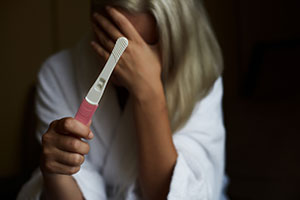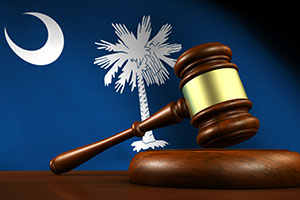As ExpertPages reported last year, the Florida Supreme Court declined to adopt the Daubert standard of expert witness admissibility after the Florida legislature added it to the state Evidence Code. The Florida Supreme Court has the power to determine procedural rules that govern Florida’s court system and can reject legislation that invades that domain.
The court typically defers to legislation that changes court procedures, but reserves the power to overturn procedural legislation when it has doubts about its constitutionality. The court expressed concerns about the impact that Daubert has on the right to a jury trial because it substitutes a judge’s view of an expert’s testimony for a view that a jury might reasonably take.
Opponents of Daubert argue that it is the jury’s function to determine the credibility of witnesses. Proponents of Daubert make a distinction between the reliability of an expert’s methodology and the expert’s credibility.
Since an expert’s credibility typically hinges on the reliability of an expert’s methods, there is good reason to question whether the distinction is illusory. The Florida Supreme Court, in choosing not to adopt Daubert, placed its faith in juries to decide whether experts form their opinions in a reliable way.
The court’s decision in 2017 not to adopt Daubert as a rule of evidence avoided ruling on whether the legislature’s 2013 addition of the Daubert standard to the Evidence Code violated the Florida Constitution. That issue came before the court in DeLisle v. Crane because Florida’s Fourth District Court of Appeal ruled in 2016 that a trial court erred by not applying Daubert to exclude expert evidence.
Facts of the Case
Richard DeLisle developed mesothelioma, a form of cancer that is caused by inhaling asbestos fibers. He sued a number of businesses that may have exposed him to asbestos. His case went to trial against three defendants. Two other potential sources of asbestos exposure were included on the verdict form.
The jury found that all five entities named on the verdict form, including the three defendants, were responsible for DeLisle’s mesothelioma. The verdict against Lorillard Tobacco was based on evidence that DeLisle smoked Kent cigarettes in the 1950s. The filters in Kent cigarettes at that time contained asbestos. The filters were supplied by a former subsidiary of Hollingsworth and Voss Co. (“H & V”). The jury’s verdict against H & V was based on its use of asbestos in cigarette filters. The verdict against Crane Co., a manufacturer of valves and pumps, was based on its use of gaskets that contained asbestos.
One of DeLisle’s experts testified that every exposure to asbestos during a lifetime substantially contributes to mesothelioma. Two of his experts testified that low level exposures to the kind of asbestos used by Crane might not substantially increase the risk of mesothelioma.
Lorillard and H & V moved to exclude the causation testimony of four expert witnesses: a toxicologist, an environmental scientist, a pulmonologist, and an industrial hygienist. The companies argued that the testimony did not satisfy the standards of Daubert contained in the state statute that the legislature enacted. The trial court held a Daubert hearing and admitted the testimony.
The jury returned a verdict of $8 million. The jury apportioned 22{d61575bddc780c1d4ab39ab904bf25755f3b8d1434703a303cf443ba00f43fa4} of the fault to H & V, 22{d61575bddc780c1d4ab39ab904bf25755f3b8d1434703a303cf443ba00f43fa4} to Lorillard, and 16{d61575bddc780c1d4ab39ab904bf25755f3b8d1434703a303cf443ba00f43fa4} to Crane. The remaining fault was attributed to the two entities that were not on trial. The trial court rejected all challenges to the verdict and entered judgment in favor of DeLisle.
The court of appeals reversed the judgment after concluding that the trial court failed to exercise its gatekeeping function under Daubert. The state supreme court agreed to review the decision to determine whether the legislature violated the principle of separation of powers by making a procedural change to the rules of evidence.
Supreme Court’s Rule-Making Power
The Florida legislature adopted the Florida Evidence Code in 1979. The Florida Supreme Court, while questioning the legislature’s power to impose procedural rules on the Florida court system, used its rule-making authority to adopt the Evidence Code to the extent that the Code’s provisions were procedural. The supreme court adopted the Code to avoid prolonged battles as to which of its sections address substantive law and which are procedural.
Since 1979, the supreme court has generally adopted legislative changes to the Evidence Code. In 2000, however, it declined to adopt a rule that would have allowed former testimony of a witness to be admitted at a criminal trial, even if the witness was available to testify. That rule would have violated a defendant’s constitutional right to confront witnesses, as the court decided three years later when it reversed a trial court decision that admitted testimony under the legislature’s rule.
The supreme court subsequently declined to adopt other procedural rules enacted by the legislature, including a rule that would have rendered inadmissible the testimony of out-of-state experts in medical malpractice cases unless the experts subjected themselves to disciplinary review by the Florida Board of Health. Last year, the court declined to adopt the legislature’s addition of the Daubert rule to the Evidence Code.
Substance v. Procedure
The Florida Supreme Court formally adopted the Frye standard to determine the admissibility of expert opinions in 1989. The Frye test equates an opinion’s reliability with the expert’s use of a generally accepted methodology to arrive at that opinion.
The U.S. Supreme Court replaced the Frye standard with the Daubert standard in 1993. While proponents of the Daubert test argue that it keeps “junk science” out of the courtroom, the Florida Supreme Court declined to adopt Daubert because (as it explained in a 1997 decision) it viewed Frye as a stricter test that was more likely to assure the reliability of expert evidence.
As the Florida Supreme Court explained: “Frye relies on the scientific community to determine reliability whereas Daubert relies on the scientific savvy of trial judges to determine the significance of the methodology used.” Since judges are not scientists, the court deemed Frye to be the better test for judging reliability.
Responding to demands made by lobbyists for the insurance industry and other corporate interests, the Florida legislature adopted Daubert in the Evidence Code. However, the Florida Constitution requires a two-thirds legislative majority to change the Florida Supreme Court’s procedural rules. The vote in the Florida House fell well short of that margin.
The supreme court decided that a rule governing the admissibility of expert testimony is procedural. Substantive rules create, define, or regulate substantive rights while procedural rules regulates the actions of litigants in court proceedings. There is no substantive right to present the testimony of a particular expert. Rather, courts decide whether to admit expert testimony by following a procedure that determines whether the testimony is reliable.
Under the Florida Constitution, it is the Florida Supreme Court that is empowered to define court procedures. The court decided that the legislature unconstitutionally infringed upon that procedure by adopting the Daubert standard. Florida will therefore continue to use the Frye standard to determine the admissibility of expert opinions.
Court Reinstates Verdict
Given the Florida Supreme Court’s refusal to use its rulemaking authority to adopt Daubert after the legislature amended the Evidence Code, it should come as no surprise that the supreme court reversed the court of appeals’ reliance on the legislatively-adopted Daubert standard.
The supreme court noted that Frye only excludes opinions that are based on new or novel methodologies that the scientific community has not accepted. In all other cases, it is the jury’s role to assess the reliability of expert testimony.
The supreme court held that medical causation testimony concerning mesothelioma is not new or novel and is therefore not subject to the Frye standard. Nor does an assessment of the risk of harm caused by substances containing asbestos depend on new or novel methods of analysis.
One expert’s disagreement about the reliability of another expert’s methodology is exactly the kind of factual dispute that juries should resolve. The court concluded that judges should not usurp the jury’s role in “choosing between legitimate but conflicting scientific views.”












